Calculate the carbon footprint of your products and services
Assessing the carbon footprint of your products and services is essential to strengthening your carbon competitiveness® and meeting the growing demands for transparency from customers and regulators.
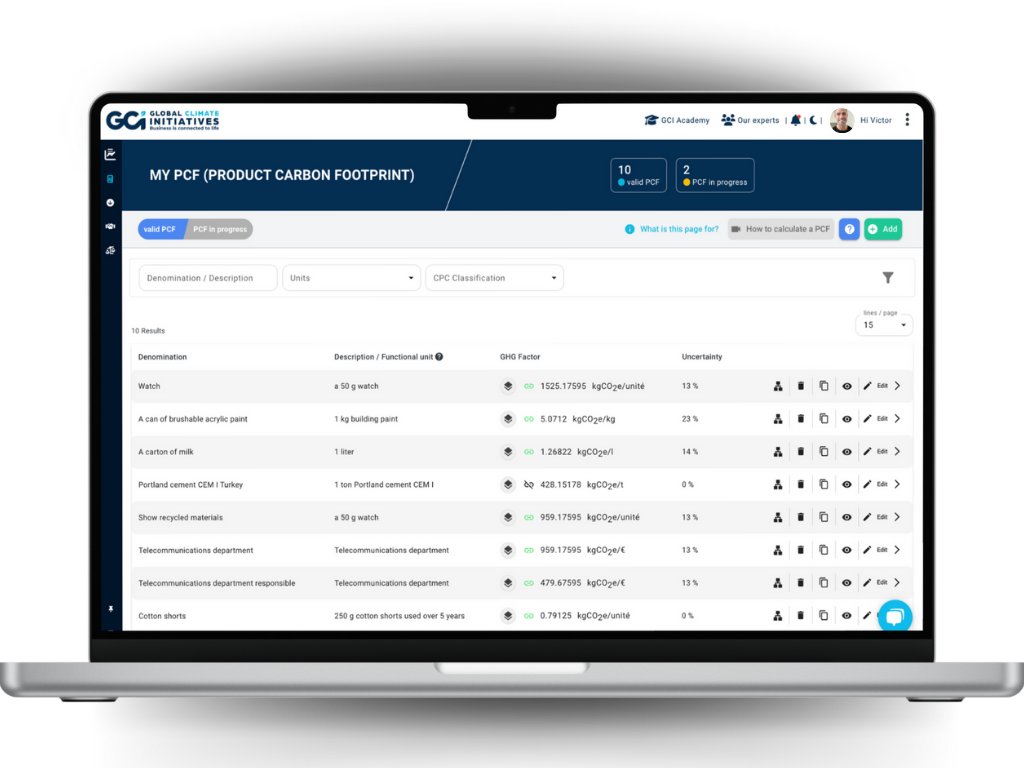
To satisfy your customers and stand out from your competitors ... highlight your Carbon Competitiveness®.
Register to calculate the carbon footprint of your products or services for free
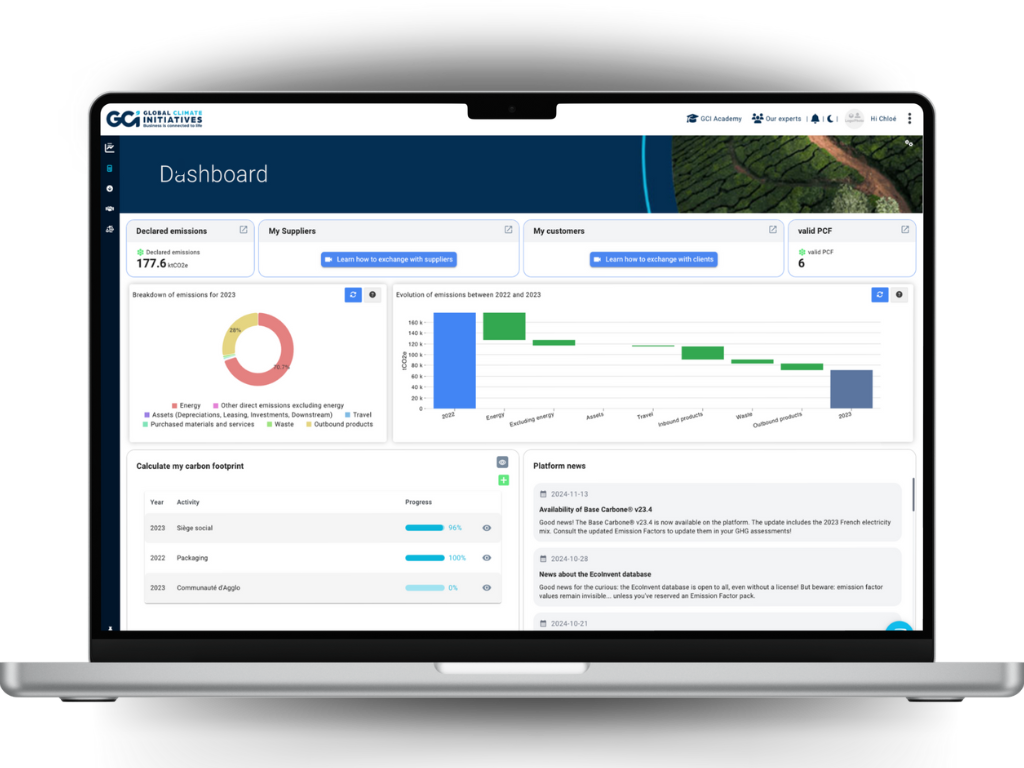

Promote your eco-responsible commitment to your customers.

Collaborate actively between customers and suppliers to improve your individual Carbon Competitiveness®.


HOW TO MEASURE THE CARBON FOOTPRINT OF A PRODUCT OR SERVICE ON THE GCI PLATFORM
STEP 1: Register on the GCI platform
Start by identifying yourself by clicking on : Login to my space. Otherwise, register to the GCI platform:
When you are logged into your account, go to the "My FCP" area located in the vertical menu.
Then click on the "Add" button.
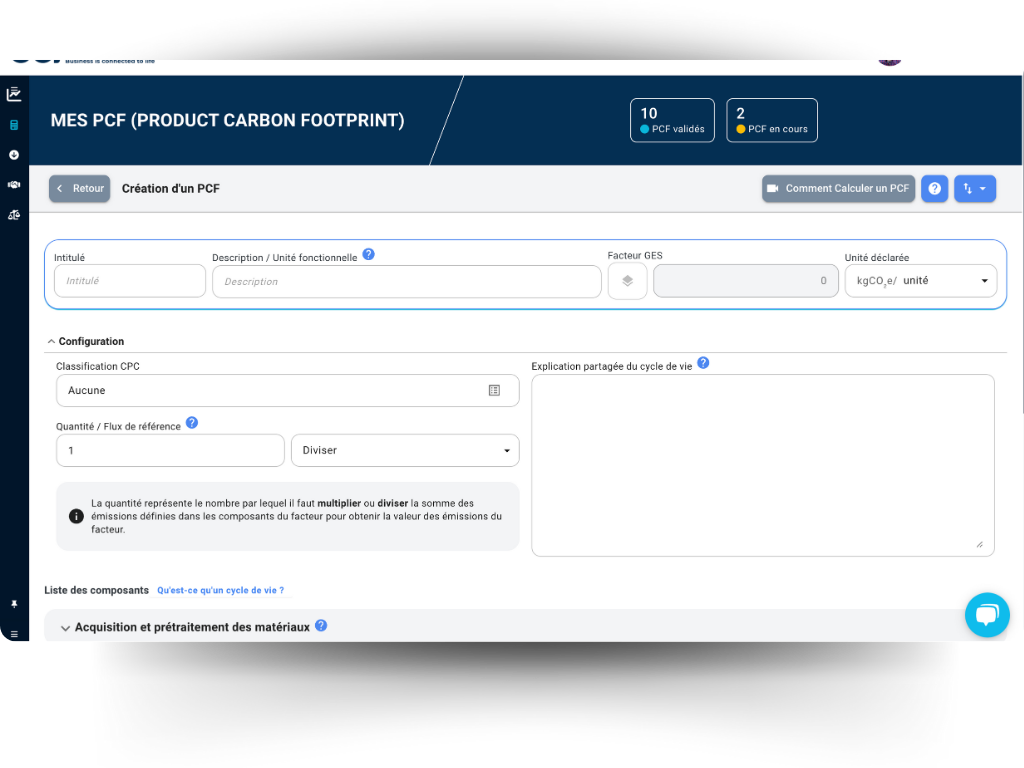
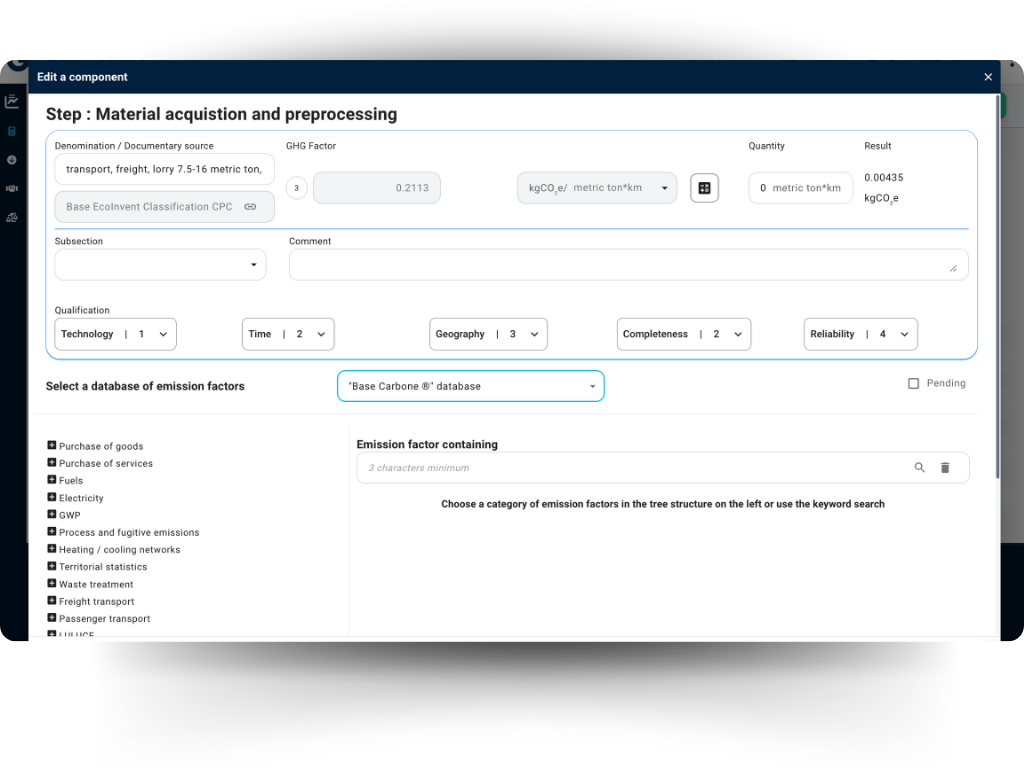
STEP 2: Calculate your PCF (Product Carbon Footprint, in accordance with ISO 14 067)
Get your emission factor from your own data and the chosen database.
Create a PCF to define the carbon footprint of your good or service according to its life cycle.
List all the components of each stage of the life cycle of your good or service to define its carbon footprint.
STEP 3: Share the results with your customer(s)
GCI provides a truly collaborative Buyer/Supplier platform.
Exchanges between suppliers and customers are made easy, with automatic, customizable e-mail dispatches and reminders, and a monitoring dashboard.
The result of your calculation is automatically shared in the "supplier" emission factors database.
From the vertical menu, click on "My partners" and share the result of your calculation.
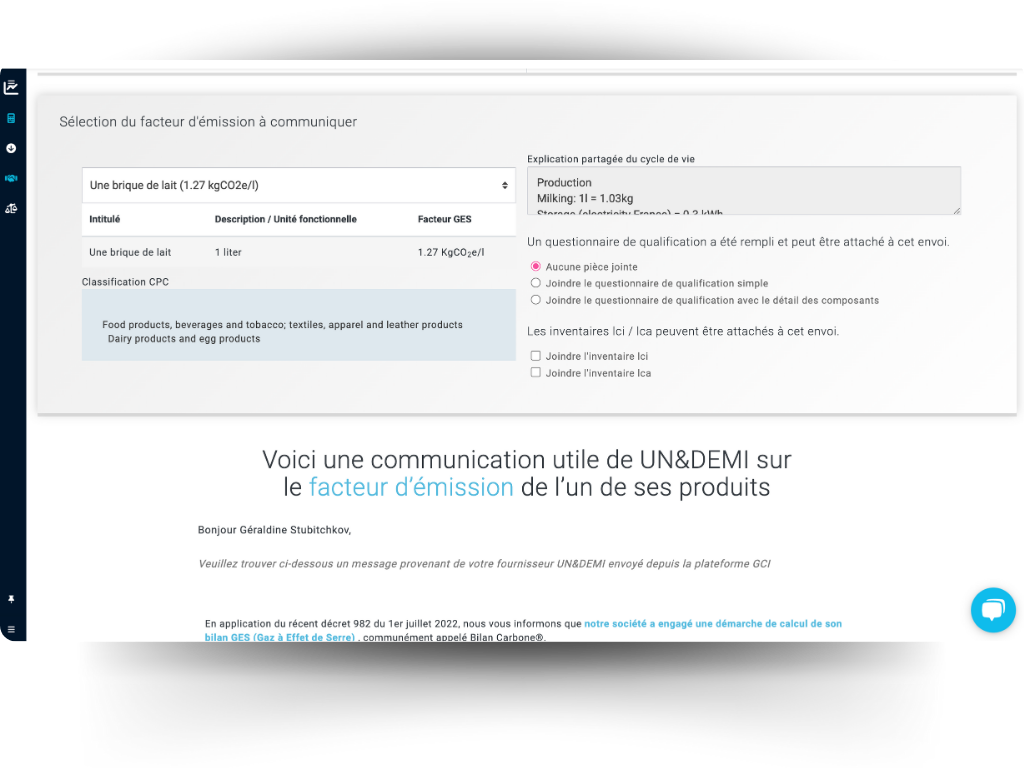
DEVELOP AND MAINTAIN YOUR
COMPANY WITH THE GCI PLATFORM
Calculation of customized emission factors for products and services in compliance with ISO 14 067 and the GHG Protocol
In addition to the information described below, you may wish to read thisote FE of products - goods and services - with GCI also available in your GCI Academy space.
- National and international regulatory framework.
- Lexicon and definition.
- How to calculate a custom emission factor with GCI.
- Methodological description of ISO 14 067.
WE ANSWER YOUR QUESTIONS!
Life cycle analysis
Life Cycle Assessment (LCA) allows to include in the carbon footprint of the product, all the environmental impacts, from the extraction of the raw materials composing the product, to its treatment at the end of life (landfill, recycling....).
Product Carbon Footprint (PCF)
The sum of GHG emissions and removals in a product system, expressed in CO2 equivalent, and based on a life cycle analysis using the single climate change impact indicator.
PCF du berceau à la porte - Cradle to gate PCF
Partial carbon footprint of the life cycle of an intermediate product, from the acquisition of materials to the time the product leaves the door of the reporting company (e.g., immediately after the product is produced).
PCF du berceau à la tombe - Cradle to grave PCF
Carbon footprint of a product studied, from the acquisition of materials to the end of the product's life.
The functional unit
The main role of the functional unit is to provide a unit of reference to compare two products. It must reflect the function of a product in terms of quantity, quality/performance and duration.
Examples of functional units:
- Functional unit of a t-shirt: weight 200g / life span of 100 washes
- Functional unit of a light bulb: to light with a luminosity of 40W during 1000h
- Functional unit of a car: life span of 150,000 km
- Functional unit of a pen: writing on a distance of 100 km
- Functional unit of an IT service: man/day
Product system
A set of unitary processes with elementary flows fulfilling one or more defined functions and which model the life cycle of a product.
Product Category Rules (PCR)
In order to make environmental declarations (display) or various communications on the carbon footprint of a product, it must sometimes be calculated according to the PCR (Product Category Rules).
RCPs are defined as a set of specific rules, requirements and guidelines for quantifying and reporting the carbon footprint, or partial carbon footprint, for one or more product categories.







